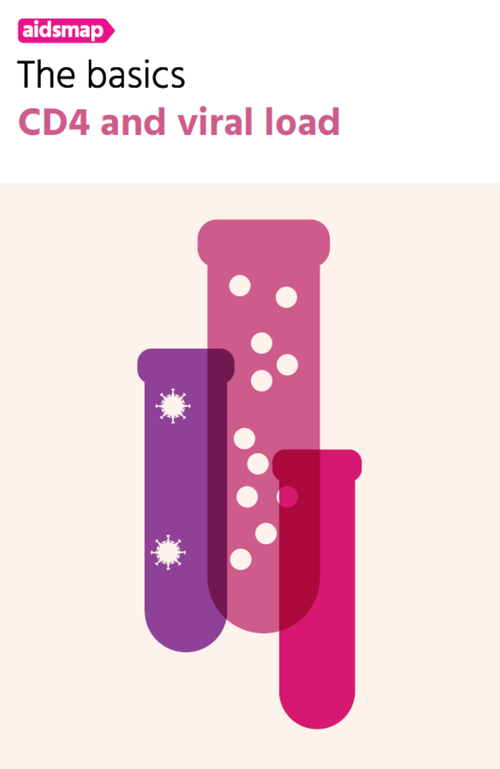
Key points
- Elite controllers and viraemic controllers are rare individuals who have a very low viral load without taking treatment.
- Although guidelines generally recommend antiretroviral therapy for all people with HIV, there are specific issues for HIV controllers to consider.
- This page outlines circumstances in which controllers may be advised to take HIV treatment.
- The final decision always rests with the person living with HIV.
Less than 1% of people living with HIV can control HIV to undetectable levels without HIV medicine. These people are known as HIV controllers.
In this group of people, HIV control is favoured by an unusual immune response that is not commonly seen in most people with HIV. Although many factors may be at play, it seems that these people’s immune cells can control HIV very well.
HIV controllers are defined by their ability to control their viral load. Some HIV controllers also meet the definition of ‘long-term non-progressors’. This is a group of people who maintain a high CD4 count for several years without HIV treatment.
If you are an HIV controller, you may be wondering if guidelines that recommend treatment for all people living with HIV apply to you. There are a number of factors that should be carefully considered before starting antiretroviral therapy (ART). This page gives information about the pros and cons of starting ART.
What is an HIV controller?
The definition of an HIV controller varies from one study to another. However, it is always based on a viral load cut-off and the duration of control.
Individuals who maintain their viral loads below 50 copies are elite controllers, whereas those who control between 50 and 2000 copies are considered viraemic controllers.
How long does viral control need to be maintained for a person to be considered a controller? Definitions range from three viral loads below a given cut-off within 12 months, to the last five viral loads being below a cut-off for at least five years.
Nevertheless, two definitions of HIV control are widely used:
- A person who has never taken ART and has at least two viral loads below 50 copies within one year.
- A person who has never taken ART and more than 90% of all their viral load tests are below 400-500 copies for over five (or ten) years.
These definitions matter. What is observed in elite controllers will not necessarily be seen in viraemic controllers. Detectable viral loads in viraemic controllers can increase the risk of serious health issues and may lead to a lower CD4 count over time.
Reasons to consider taking ART
According to a French team of experts led by Professor Olivier Lambotte, the following situations are reasons for HIV controllers to consider starting ART. If you are facing one or several of them, you may want to have a thorough discussion with your doctor around these issues.
- Loss of viral control: the loss of the immune system’s control of HIV, due to reduced function of CD4 and CD8 cells can lead to an increase in viral load.
- Temporary increases in viral load (known as blips). They may suggest a temporary loss in immune control.
- Wanting to reduce the risk of HIV transmission. Although HIV transmission is unlikely at low viral loads, an HIV controller might feel more comfortable using ART as a ‘treatment as prevention’ tool.
- A decline in the CD4 cell count. Especially when starting from an already low level, decreased CD4 cell count is not uncommon among controllers and may raise concerns. For example, a skewed CD4/CD8 ratio predicts the emergence of non-AIDS health issues in people living with HIV. The loss of CD4 cells has been linked to viral blips.
- Overstimulated immune responses that cause inflammation. This is linked with poor health outcomes in people living with HIV. However, it can be challenging to decide to start ART based on this, since it’s not clear how inflammation should be measured.
- Other health concerns such as heart disease or cancer. In people living with HIV these conditions may develop due to high amounts of inflammation, which can be reduced with ART.
Importantly, all these situations are often inter-related. For example, low-levels of HIV in the blood can lead to loss of CD4 cells, an overstimulated immune system, and inflammation. This is another reason to review your situation with your doctor as precisely as possible.
The team of experts has made some suggestions of what to do in specific clinical scenarios:
- Detectable viral load above 1000 copies: start ART.
- Viral load consistently between 50 and 1000 copies, with a decrease in CD4 cell count or CD4/CD8 ratio: start ART.
- Viral load consistently between 50 and 1000 copies, with a stable CD4 cell count or CD4/CD8 ratio: close follow-up.
- Viral blips that occur from time-to-time, with a decrease in CD4 cell count or CD4/CD8 ratio: start ART.
- Viral blips that occur from time-to-time, with a stable CD4 cell count or CD4/CD8 ratio: close follow-up.
Some other scenarios should lead to a discussion between the doctor and the patient:
- Undetectable viral load, with a decrease in CD4 cell counts or CD4/CD8 ratio: consider treating any non-HIV related health conditions.
- Heart disease, obesity, smoking, hepatitis C or B: consider treating other health conditions.
- Cancer: consider starting ART.
The effect of ART on HIV controllers
A handful of studies have looked at the outcomes of ART in HIV controllers, including how it affects CD4 count. HIV controllers on ART have variable increases in CD4 cell count. For example, one study showed seemingly small increases in CD4 counts among HIV controllers who started ART, whereas another study observed significant increases in CD4 counts. (Increased CD4 counts are typically associated with reduced risk of infections and serious illnesses.) One study showed that HIV controllers off ART were at higher risk for developing non-AIDS related cancers than those on ART. These studies suggest that ART can variably increase CD4 counts in HIV controllers and may reduce health risks.
A handful of studies have looked at the effect of ART in HIV controllers. In terms of CD4 cell counts and health outcomes, they have reported:
- An increase of CD4 cells in controllers after starting ART.
- In another study, seemingly smaller increases in CD4 cells among controllers with a viral load of less than 400 copies at the start of ART, as compared with non-controllers with viral loads of 400-1000 copies, but the reduction in viral load was similar in both groups.
- In 34 controllers treated with ART for a median duration of 15 months, the CD4 cell count rose significantly but this increase was lower than that seen in non-controllers with detectable viraemia. Controllers did not have such a rapid increase in CD4 cells soon after starting ART.
- In a study comparing 227 HIV controllers off ART with 328 people on ART, HIV controllers off ART were more susceptible to non-AIDS related illnesses than people with HIV on ART.
You or your doctor may also be interested in the potential of ART to reduce HIV reservoirs. Latent reservoirs are groups of cells that are infected with HIV but do not produce new HIV for many months or years. They are established at the earliest stage of HIV infection and can continue to survive even when the person is on ART. Latently infected cells may be reawakened to produce HIV, therefore triggering an activation of the immune response.
What have studies on HIV reservoirs and inflammation in controllers starting ART taught us so far?
- In a study of four elite controllers with high CD4 counts, ART led to a decrease in HIV reservoirs but did not have any relevant effects on inflammatory markers.
- In a study of 16 HIV controllers with no symptoms and a viral load below 400 copies, there was a decrease of HIV markers in the blood and the rectum. Immune responses were also less stimulated.
- In a study of 35 controllers, there was a significant decline in CD8 cells, as well as a decline in an inflammatory marker, probably due to the reduced levels of HIV in the blood.
This small body of data is mostly from viraemic controllers, rather than elite controllers. It indicates that, in controllers, ART is associated with a reduction of viral replication and immune activation. However, the data do not clearly tell us whether ART decreases the size of HIV reservoirs or the occurrence of non-AIDS-related health conditions.
Should all HIV controllers take ART?
Trying to answer this important question takes us back to the definitions of HIV controllers.
One study of 52 controllers who never had a detectable viral load during their follow-up indicates that these people may not need ART to control HIV. Interestingly, these people did not show CD4 decreases or disease progression. Most people in this study had lower HIV levels than those who lost control. In addition, decreases in HIV levels have been observed in some controllers.
In controllers who have a low – but detectable – viral load, starting ART appears to be effective in the control of both HIV and immune activation. But of course, the other clinical factors described above must be taken into account when considering ART.
Additionally, your doctor should consider your willingness and readiness to start lifelong treatment. In the discussion, it will be worth asking whether you would ever be able to stop treatment if you do start, and how you would be followed up afterwards. It is important to get information about potential drug side effects; this is a common concern for HIV controllers.
Conventional ART is one treatment option. You could also ask your doctor about clinical trials testing new therapeutic approaches. However, clinical trials also present health risks that should be considered.
Whether you are thinking about ART or an experimental treatment, you should decide for yourself in a supportive environment. Experts strongly recommend that doctors who care for HIV controllers take an individualised and patient-centred approach to ART.

